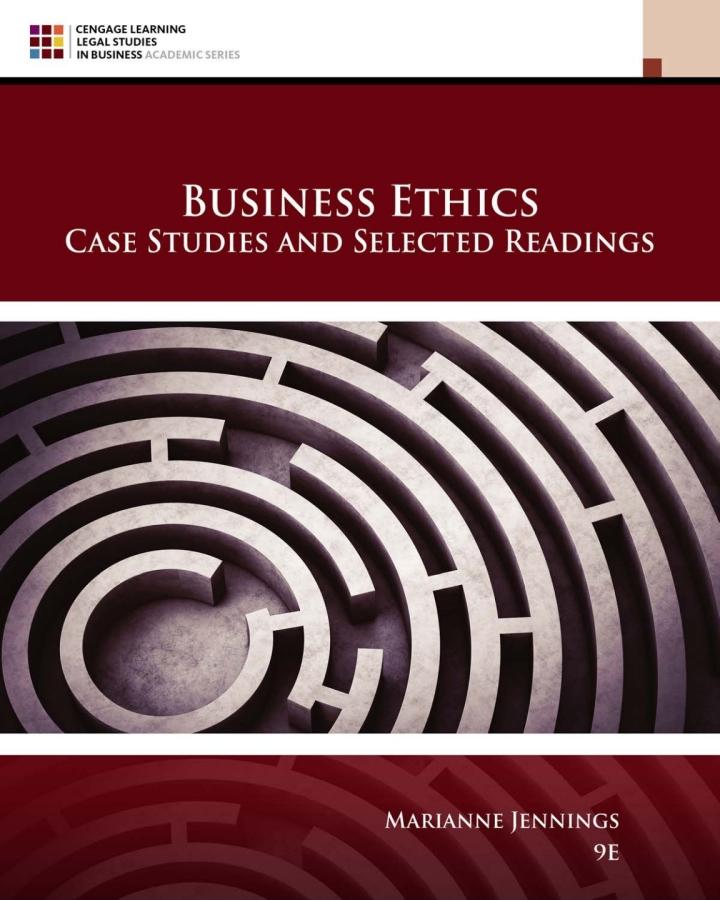On January 11, 1993, young Michael Nole and his family ate dinner at a Jack-in-the-Box restaurant in
Question:
On January 11, 1993, young Michael Nole and his family ate dinner at a Jack-in-the-Box restaurant in Tacoma, Washington, where Michael enjoyed his \(\$ 2.69\) "Kid's Meal." The next day, Michael was admitted to Children's Hospital and Medical Center in Seattle with severe stomach cramps and bloody diarrhea. Several days later, Michael died of kidney and heart failure. \({ }^{89}\)
At the same time, 300 other people in Idaho, Nevada, and Washington who had eaten at Jack-in-the-Box restaurants were poisoned with E. coli bacteria, the cause of Michael's death. By the end of the outbreak, more than 600 people nationwide were affected. \({ }^{90}\)
Jack-in-the-Box, based in San Diego, California, was not in the best financial health, having just restructured \(\$ 501\) million in debt. The outbreak of poisonings came at a difficult time for the company. However, the company was also at the beginning of what was proving to be an effective ad campaign with the introduction of "Jack", the executive with a white, spherelike head and clown features. The company was making inroads in the market shares of Burger King and Wendy's.
Federal guidelines require that meat be cooked to an internal temperature of 140 degrees Fahrenheit. Jack-in-the-Box followed those guidelines. In May 1992 and September 1992, the state of Washington notified all restaurants, including Jack-in-the-Box, of new regulations requiring hamburgers to be cooked to 155 degrees Fahrenheit. The change would increase restaurants' costs because cooking to 155 degrees slows delivery of food to customers and increases energy costs.
At a news conference one week after the poisonings, Jack-in-the-Box president Robert J. Nugent criticized state authorities for not notifying the company of the 155 -degree rule. A week later, the company found the notifications, which it had misplaced, and issued a statement.
After the Jack-in-the-Box poisonings, the federal government recommended that all states increase their cooking temperature requirements to 155 degrees. Burger King cooks to 160 degrees; Hardee's, Wendy's, and Taco Bell cook to 165 degrees. The U.S. Agriculture Department also changed its meat-inspection standards. \({ }^{91}\)
The poisonings cut sales at Jack-in-the-Box by 20\%.92 Three store managers were laid off, and the company's plan to build five new restaurants was put on hold until sales picked up. Jack-in-the-Box scrapped 20,000 pounds of hamburger patties produced at meat plants where the bacteria were suspected to have originated. It also changed meat suppliers and added extra meat inspections of its own at an expected cost of \(\$ 2\) million a year. \({ }^{93}\).........................
Discussion Questions
1. In 1993, Jack-in-the-Box adopted tougher standards for its meat suppliers than those required by the federal government so that suppliers test more frequently for E. coli. Could Jack-in-the-Box have done more before the outbreak occurred?
2. The link between cooking to a 155 -degree internal temperature and the destruction of \(E\). coli bacteria had been publicly known for five years at the time of the outbreak. The Centers for Disease Control and Prevention (CDC) tests showed Jack-in-the-Box hamburgers were cooked to 120 degrees. Should Jack-in-the-Box have increased cooking temperatures voluntarily and sooner?
3. What does the misplacement of the state health department notices on cooking temperature say about the culture at Jack-in-the Box?
4. A plaintiff's lawyer praised Jack-in-the-Box, saying, "They paid out in a way that made everybody walking away from the settlement table think they had been treated fairly." What do we learn about the company from this statement?
Step by Step Answer:

Business Ethics Case Studies And Selected Readings
ISBN: 9780357453865
9th Edition
Authors: Marianne M. Jennings





